I didn’t take many pictures in Austin this time around. But after dinner one night, Tom had to answer a call, and I had a few moments to document a minor example of Austin neon. It’s a good town for neon.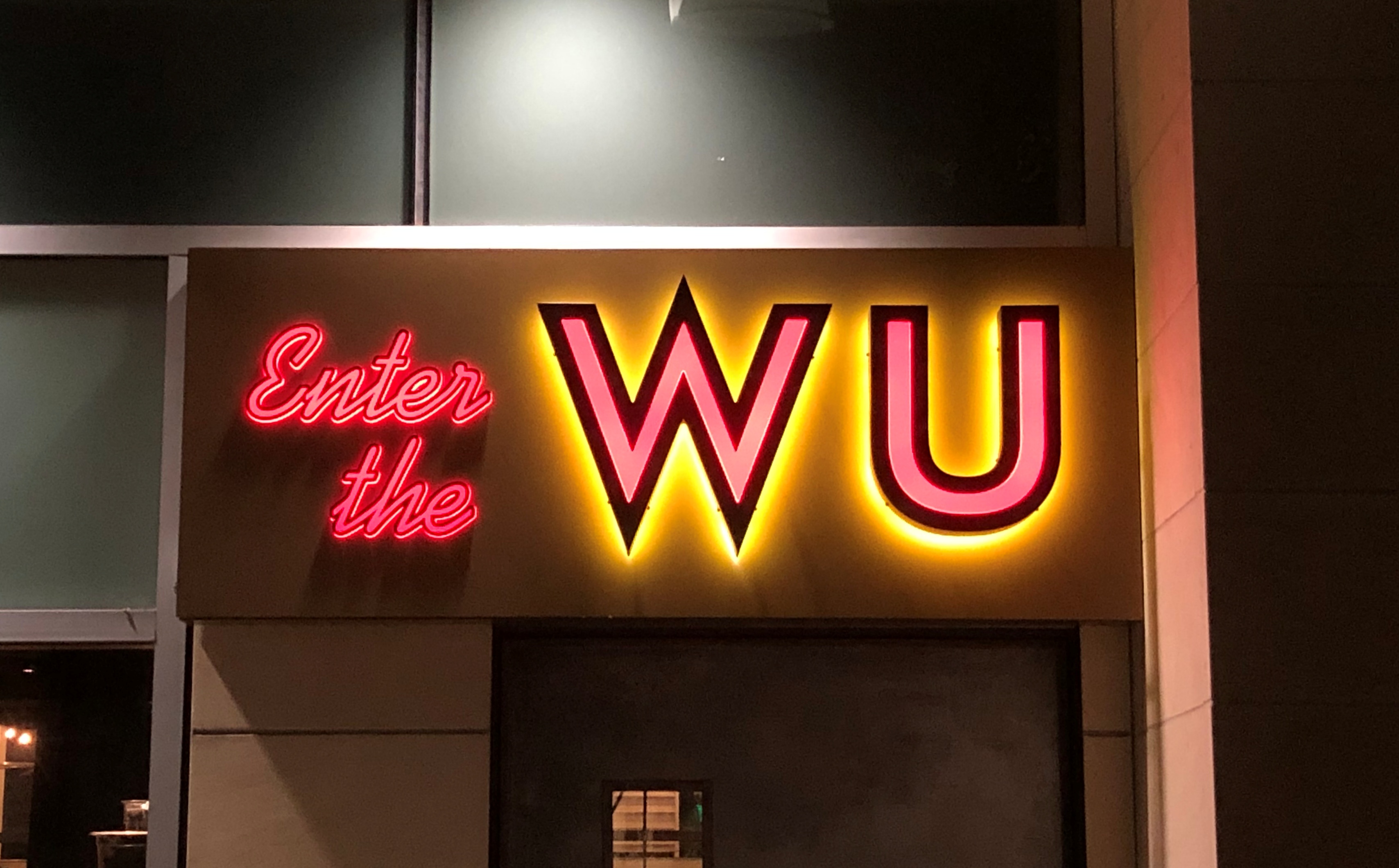
That was the restaurant entrance. The full name of the place is Wu Chow. Good chow, as it happens.
In San Antonio, I was much more attuned to image-making, at least on Saturday, when I was footloose and out to see new things. Such as Ruby City.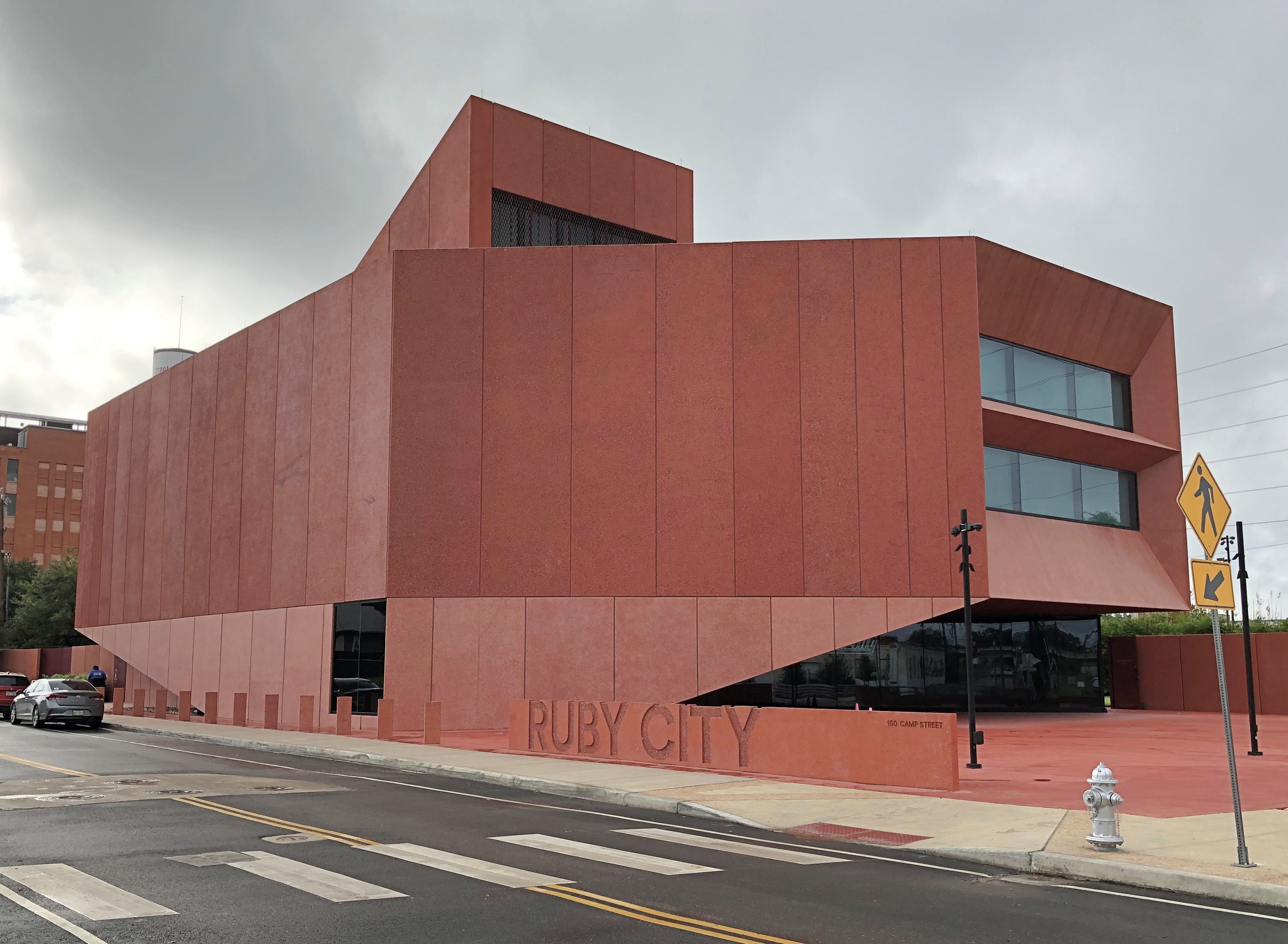
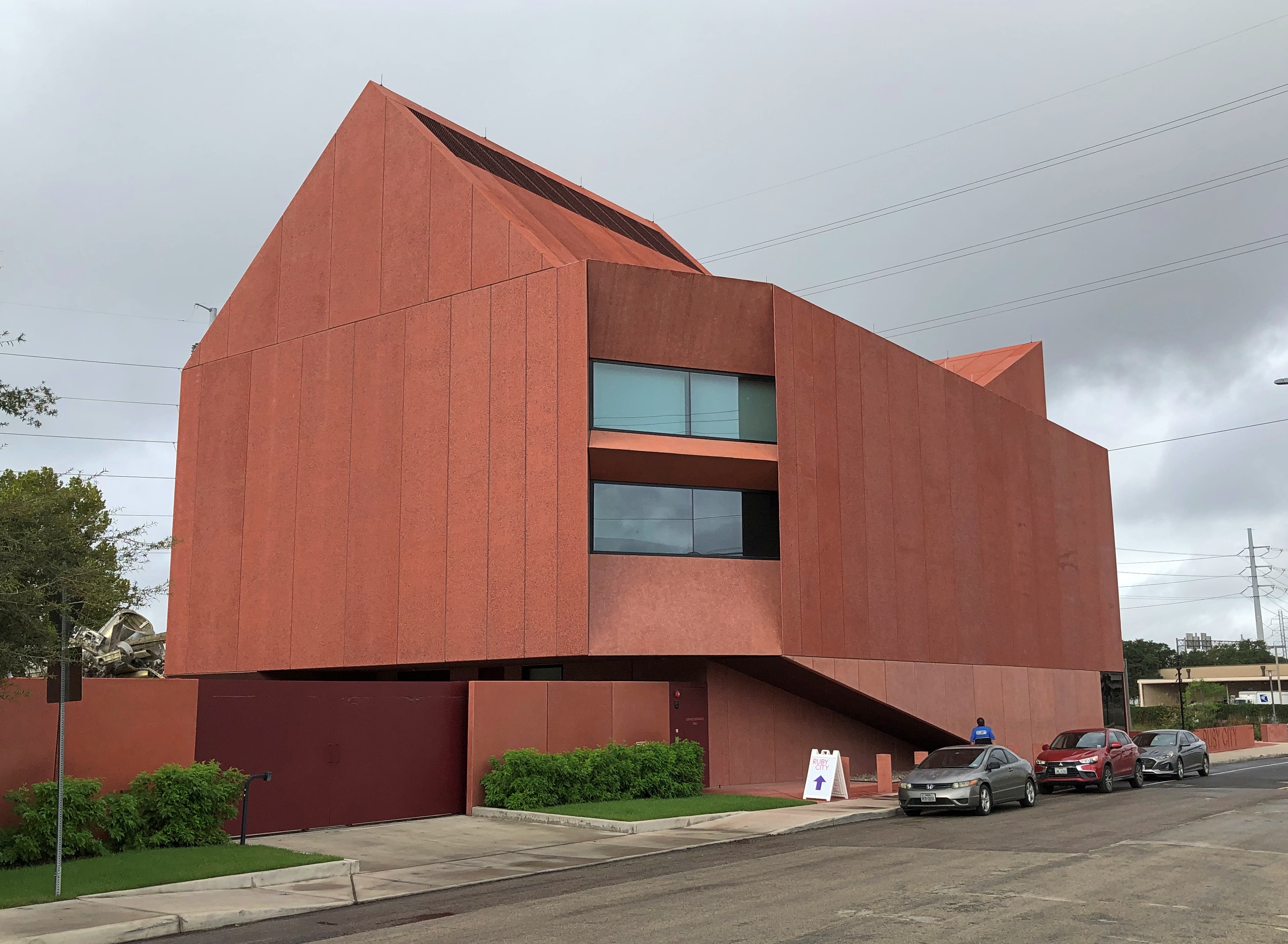
Ruby City is a new art museum west of downtown on the not-so-mighty San Pedro Creek. Which is wider at this point than much of the San Antonio River.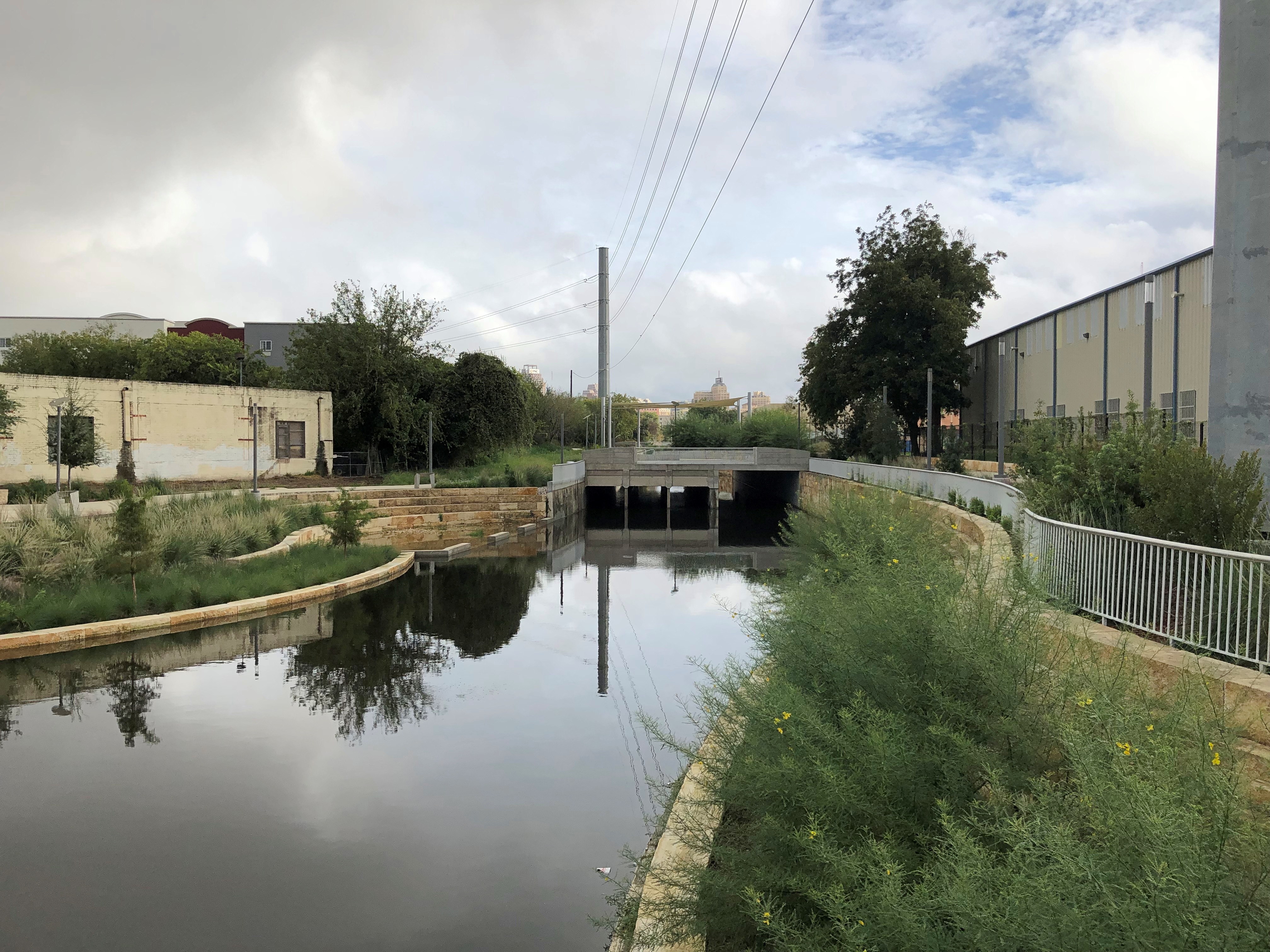
“The story of Ruby City — the landmark museum designed by world-renowned architect Sir David Adjaye… — begins with the lucid dream of a dying woman,” Texas Monthly reported just before the museum opened in 2019.
“In the spring of 2007, Linda Pace, at age 62 a legendary patron of contemporary art in San Antonio, understood that her breast cancer, diagnosed a few months earlier, was likely terminal. All the money in the world could not keep the woman born into both the Pearl beer and Pace Foods families alive long enough to see through her final project, a permanent home for her art collection.”
Ideas for the building design came to her in a dream, the magazine reported, and – having skill in drawing and materials ready at her bedside – she drew sketches and provided them to the architect. About a decade after her death, the building was realized. How much the final structure hewed to the dream-images is impossible to know, at least for those of us standing at the base of the concrete walls years later.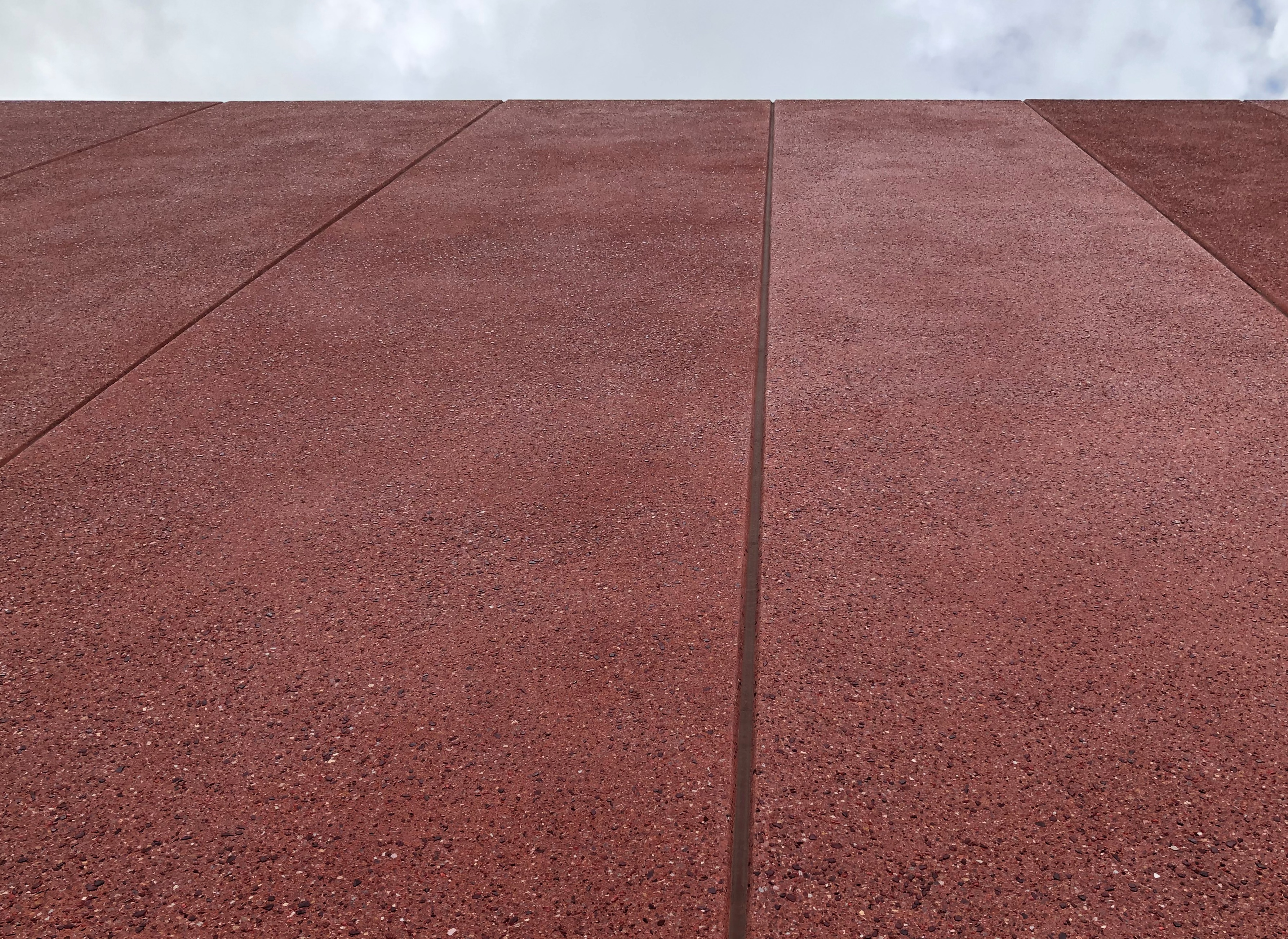
I arrived just as the museum opened at 10 in the morning. I’d been encouraged to make an online “appointment” before coming, so I did. Would crowding be an issue at this free museum? Well, no. During my first few minutes there, I was the only visitor. Everyone else worked there, and there weren’t that many of them. It was a little weird being in a gallery in which the employee’s (or volunteer’s) only job is to watch you, except pretend they aren’t really watching you.
Never mind, the entrance asks one and all to “be amazing.” I made a self-portrait.
Be amazing. That’s a tall order. Better to be “interesting” or maybe “remarkable” on a really good day. Much of the artwork inside is at least interesting. A few pieces I’d say were even remarkable, but nothing amazed me much. Maybe I’m jaded.
Actually, this rectangle o’ river rubbish was mildly amazing.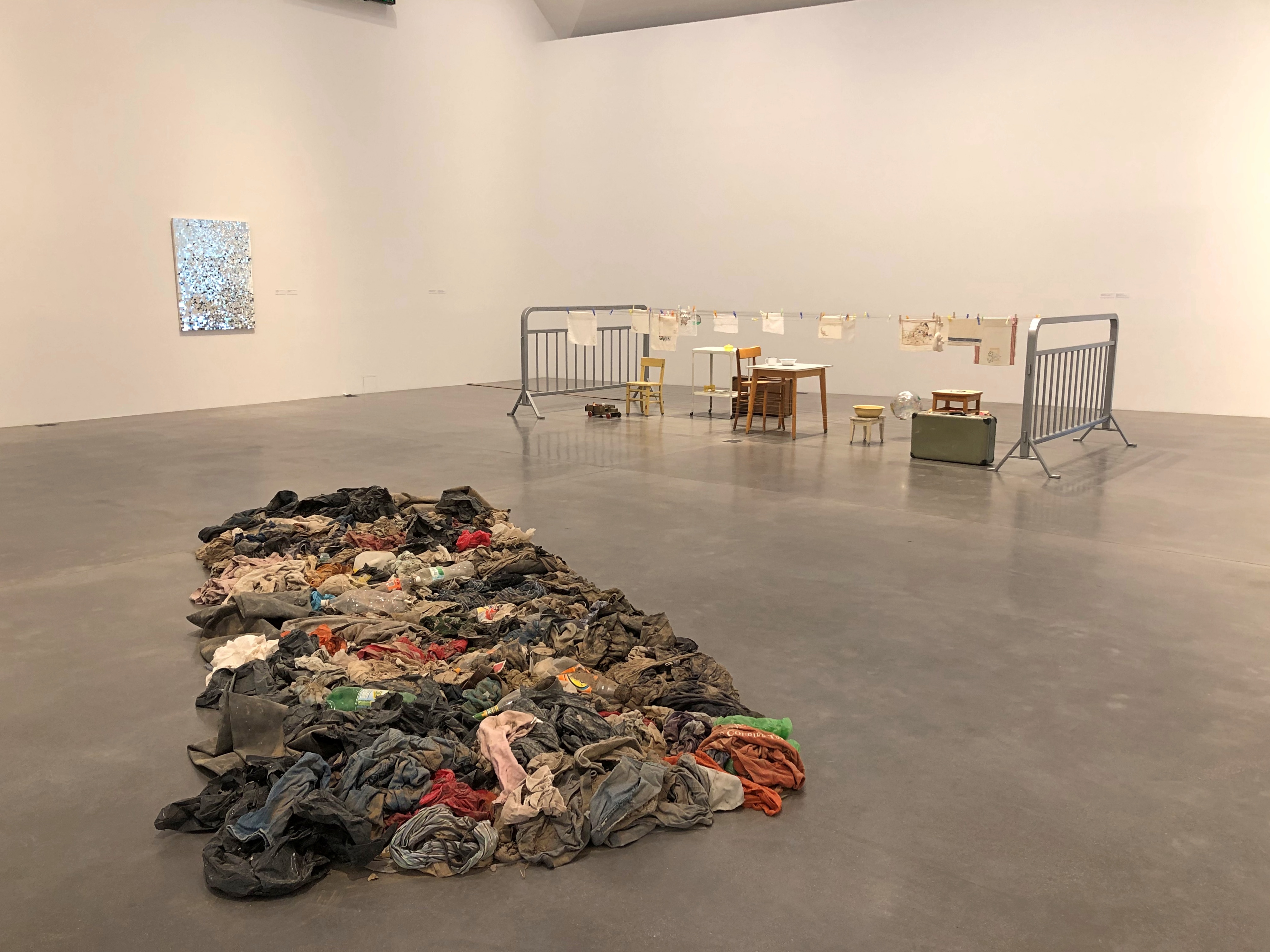
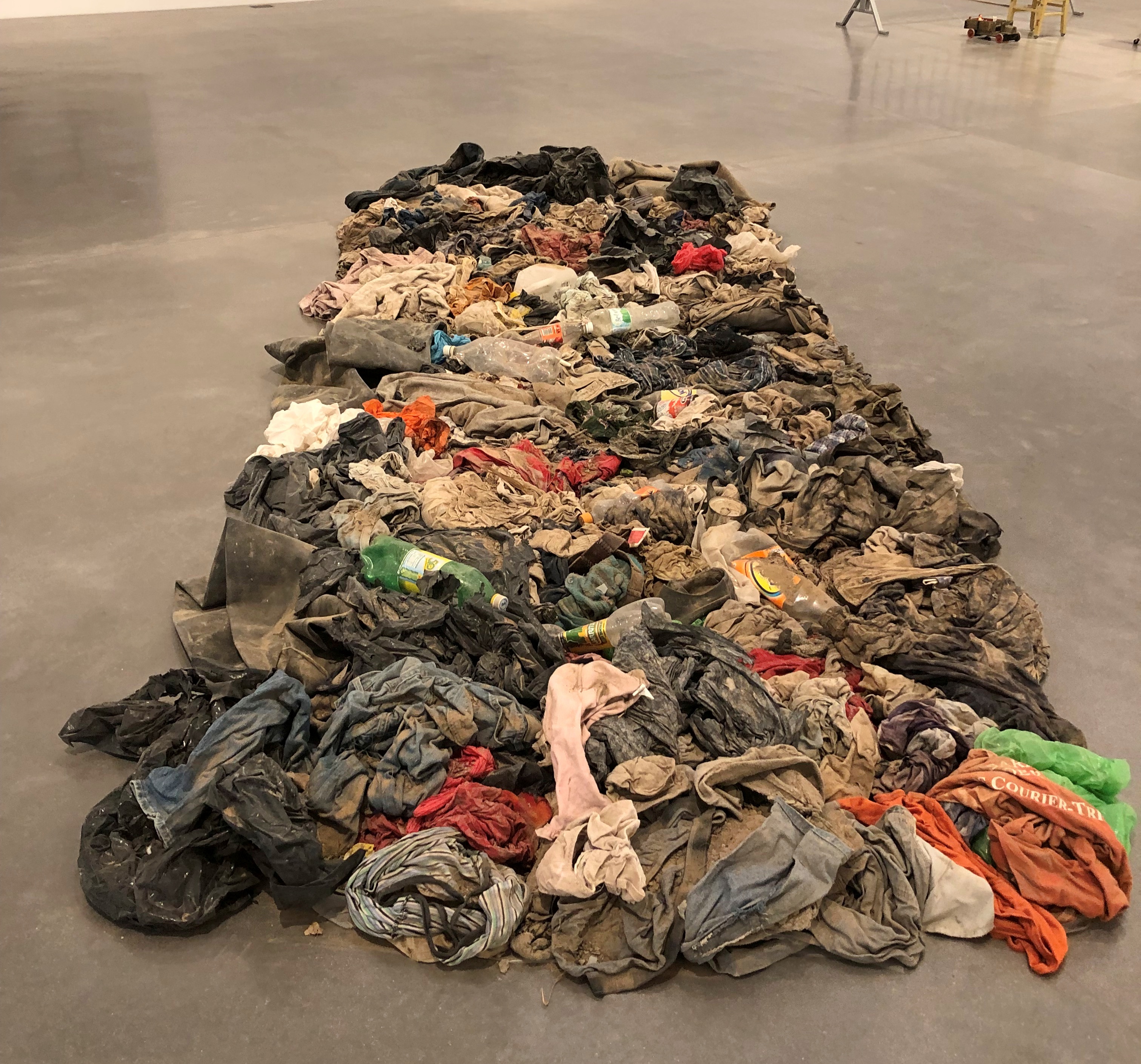
“Riverbank” (2006), by Luz Maria Sanchez of Mexico City. Made from clothing, bags, bottles etc. found in the Rio Grande. Behind it is “Mobile Home II” (2006) by Mona Hatoum, a Lebanese artist living in London. Its items are connected to laundry lines slowly pulled back and forth by small electric motors.
This one I found remarkable. “Ultimate Joy” (2001) by American artist Jim Hodges. A light bulb artist, at least for this work.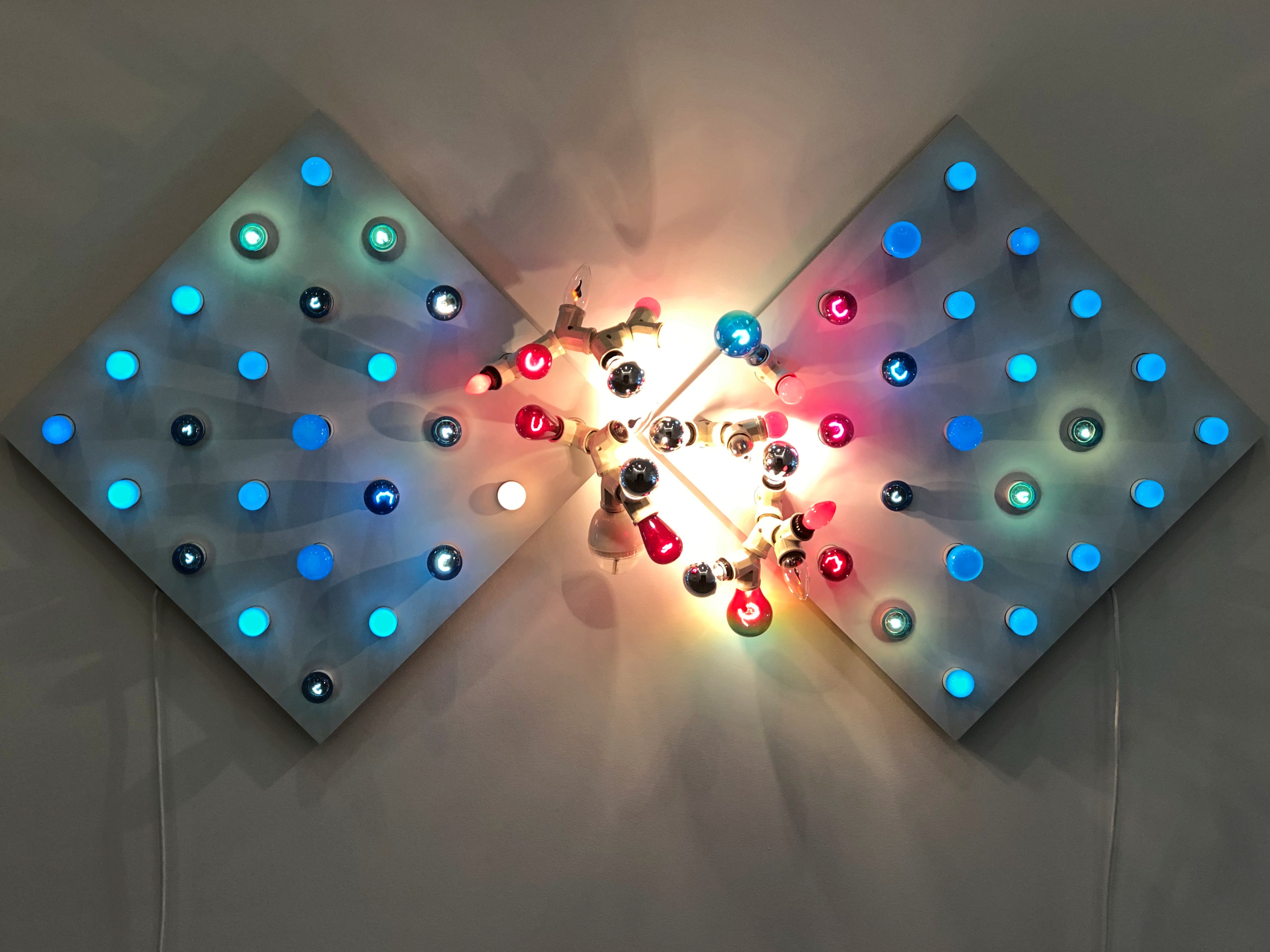
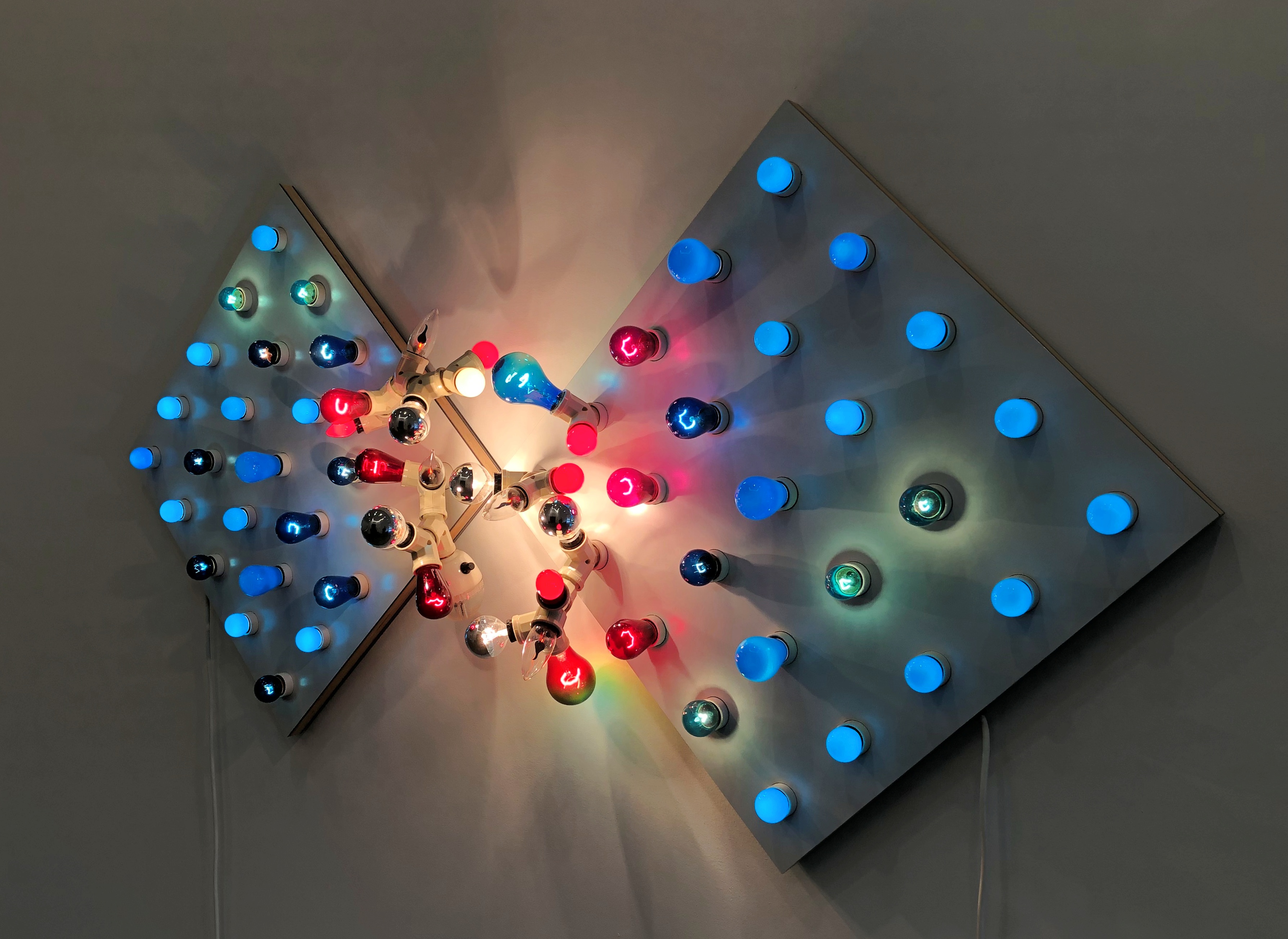
“View of Gorge” (1999) by Anne Chu, an American artist (d. 2016).
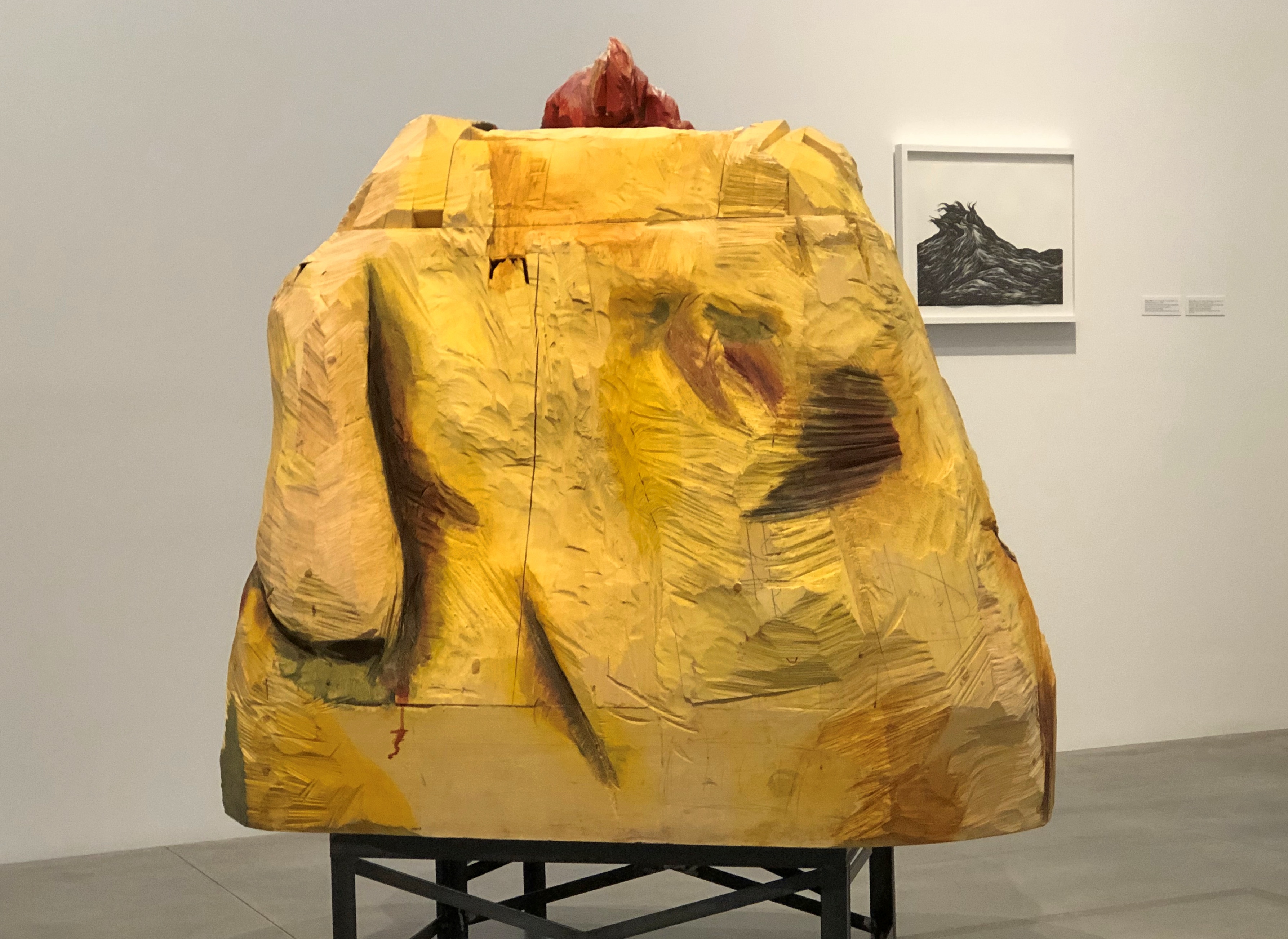
Outside is a sculpture garden with three pieces – one of which seemed to be removed for now. No matter, one of the remaining ones is an impressive pile: “5000 lbs. of Sonny’s Airplane Parts, Linda’s Place, and 550 lbs. of Tire-Wire” (1997) by Nancy Rubins.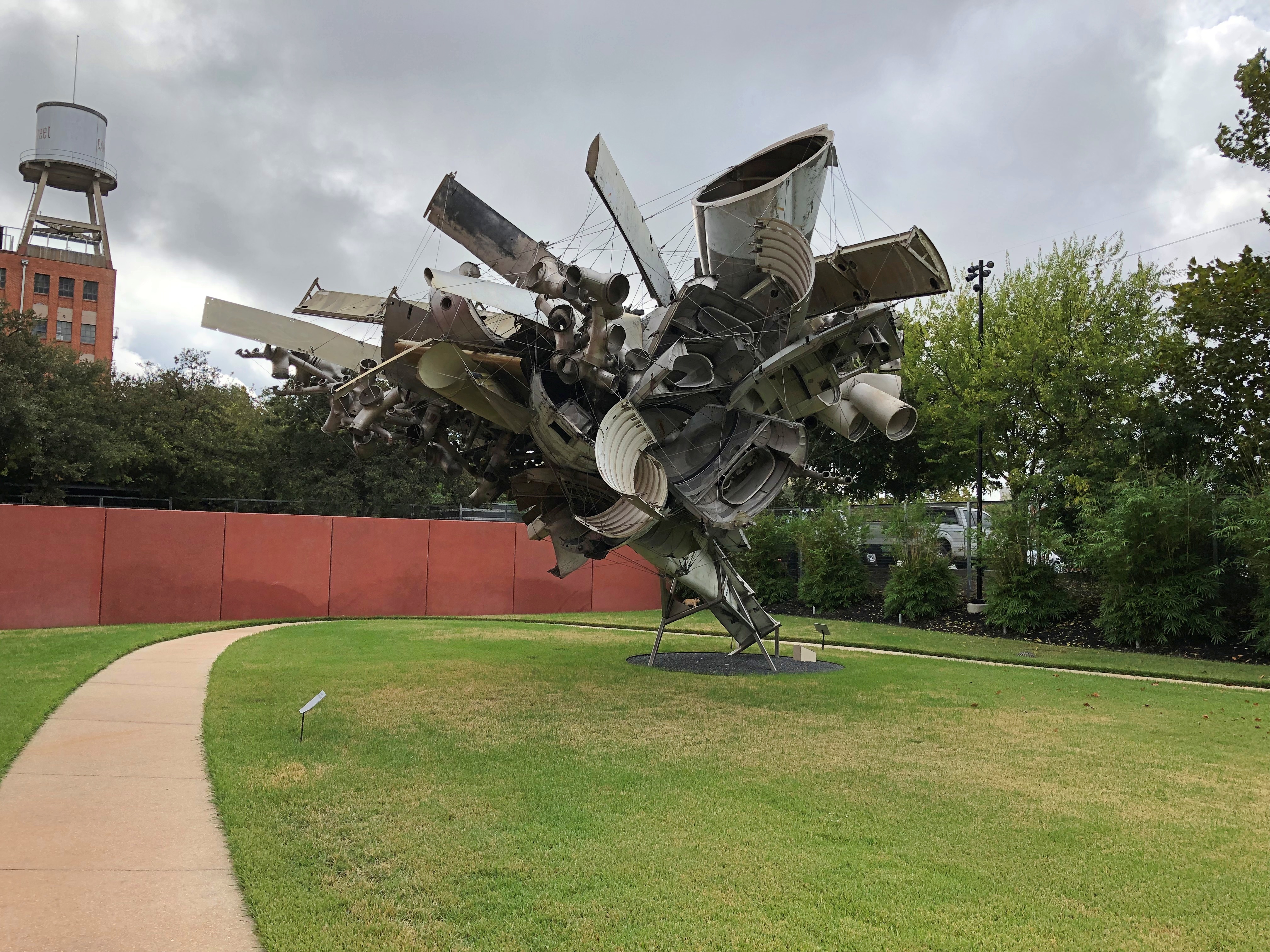

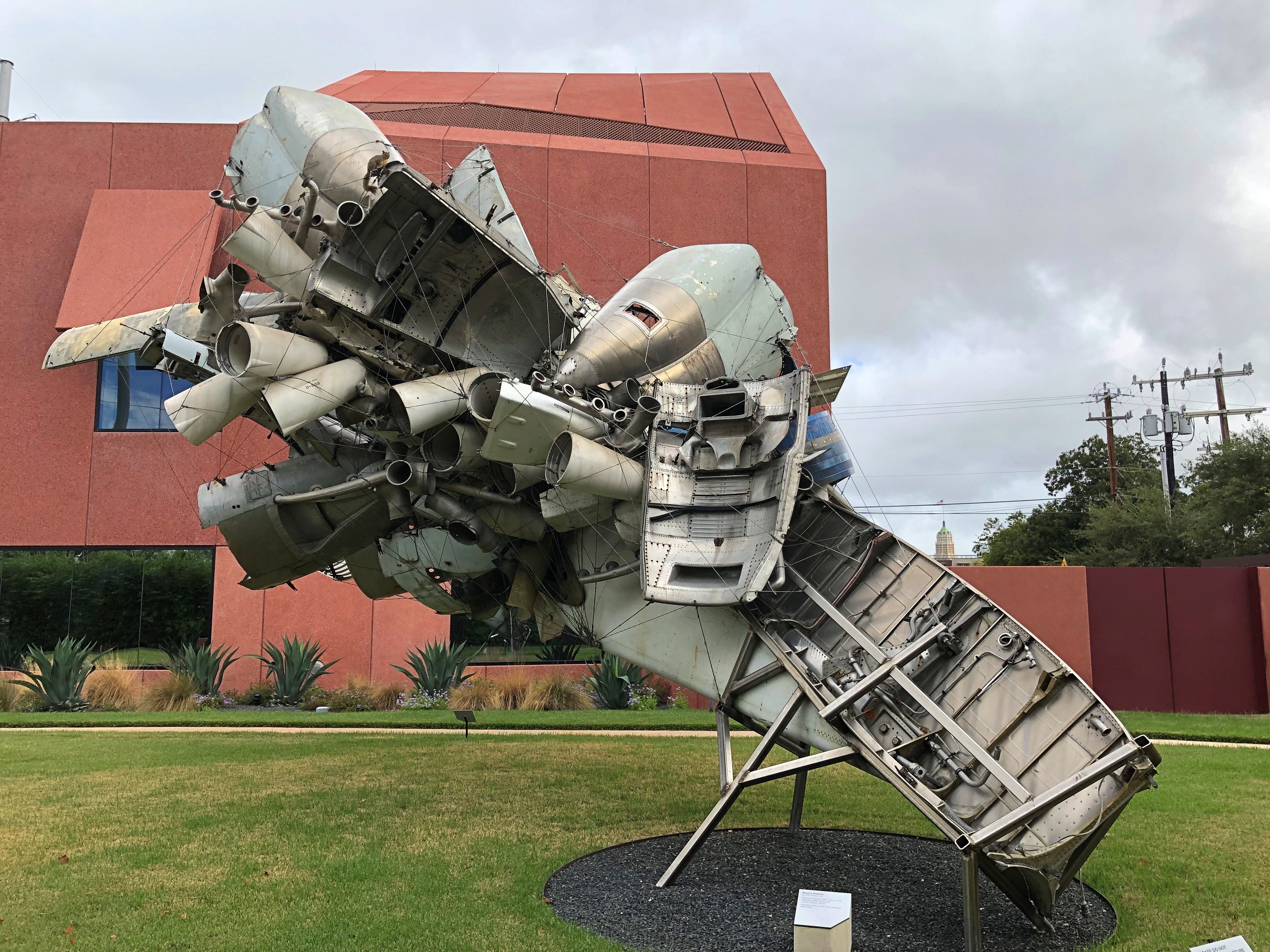
A final comment on the building itself. Maybe not the color I’d have chosen, though it’s an interesting one. Why aren’t more concrete structures one color or another? Is it too expensive compared with plain dirty white? Imagine how many ugly concrete structures would be a little less ugly with a dash of color.